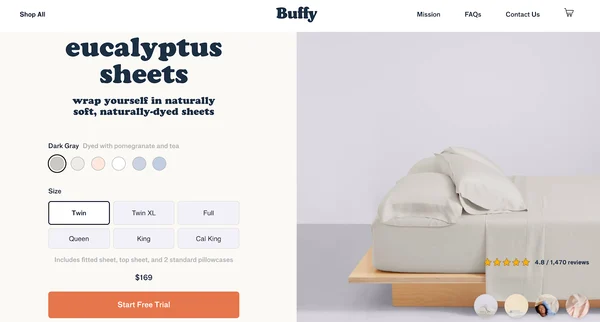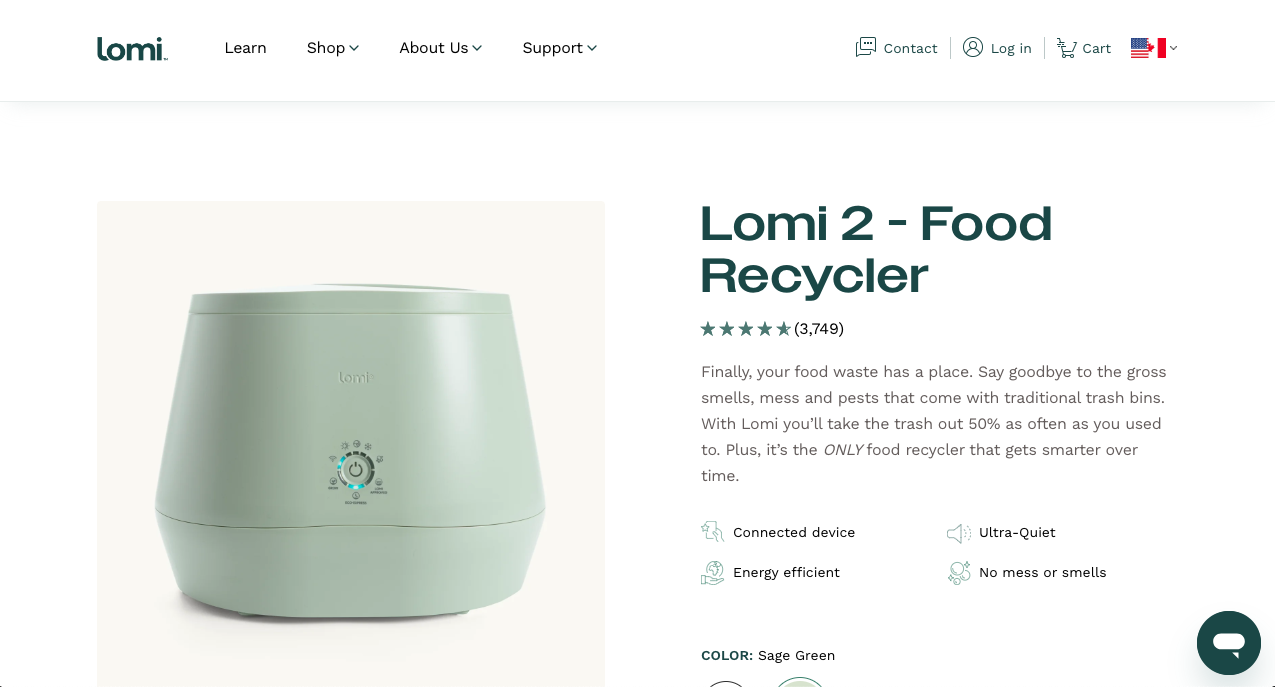When it comes to running a successful eCommerce store, one of the most critical aspects to get right is the product page. A well-optimized product page can make the difference between a customer completing a purchase or abandoning their cart. Whether you’re launching a new product or optimizing an existing one, understanding the best practices and conducting a thorough design review is essential for maximizing conversions.
In this blog, we’ll dive into eCommerce product page best practices, along with a comprehensive design review to ensure your product pages are set up for success.
Why Are Product Pages So Important in eCommerce?
Product pages serve as the virtual storefront for your business. They are where customers make the decision to buy, so making sure these pages are well-designed, informative, and user-friendly is crucial. An engaging and functional product page can inspire trust, inform shoppers, and ultimately persuade them to click the “Add to Cart” button.
Best Practices for Crafting High-Converting Product Pages
Let’s explore the most important best practices for creating product pages that drive sales and elevate the customer experience.
1. Use High-Quality Product Images
Images are one of the most important elements of any product page. In eCommerce, customers can’t physically touch or try out the products, so images play a pivotal role in their decision-making process.
Best Practices:
- Clear, High-Resolution Images: The higher the resolution, the better your product will look across all devices. Aim for images that are at least 1000px wide to ensure they don’t look pixelated.
- Multiple Angles: Show your product from different angles to give a clear view. Include close-ups to highlight key features.
- Zoom Functionality: Let customers zoom in to examine finer details, especially for products where the texture or small details matter.
- Lifestyle Shots: Add images showing the product in use, especially for lifestyle or fashion items. This helps customers visualize the product in their own lives.
2. Write a Compelling and Clear Product Title
A strong product title is essential to capture attention and ensure your product is easily searchable.
Best Practices:
- Descriptive but Concise: Include key details like brand name, product type, size, and color. For example, “Premium Leather Wallet for Men – Black, RFID Protected.”
- Use Keywords: Optimize the title for search engines by incorporating relevant keywords.
- Avoid Jargon: Unless you’re catering to a specific, niche audience, avoid technical or obscure terms that might confuse the average shopper.
3. Craft Detailed Product Descriptions
Your product description should offer more than just a rundown of features. It should help customers understand how the product will solve their problems or enhance their lives.
Best Practices:
- Highlight Key Features: Focus on what makes your product unique. Include details like dimensions, materials, and specifications.
- Show Benefits: Beyond features, explain why these attributes matter. For instance, “The RFID-blocking feature ensures your credit cards are protected from digital theft.”
- Brand Story: If applicable, add a small section about the brand’s values or mission, especially if your brand is recognized or has a loyal following.
4. Make Pricing and Discounts Visible
Your customers need to know what the product costs upfront. Pricing transparency builds trust, while discounts or promotions can encourage purchases.
Best Practices:
- Visible Pricing: Make sure the price is clearly visible on the product page, above the fold.
- Display Discounts Clearly: If the product is on sale, show the original price alongside the sale price to highlight the savings.
- Add Currency Options: For international customers, offer easy-to-see currency conversion or display prices in the visitor’s native currency.
5. Include Clear Call-to-Actions (CTAs)
CTAs are the driving force that pushes customers from product consideration to purchasing.
Best Practices:
- Prominent “Add to Cart” Button: This button should stand out from the rest of the page. Use bold colors that contrast with the background, but avoid making it overly loud or distracting.
- Location of CTA: Place the CTA above the fold so customers don’t have to scroll to find it, and ensure it remains accessible as they scroll down the page.
6. Leverage Social Proof (Reviews and Ratings)
Reviews and ratings help build trust and show potential buyers that others have already had a positive experience with your product.

Best Practices:
- Display Ratings: Include an overall star rating at the top of the page.
- Customer Reviews: Add a section where customers can read real-world feedback from others, including pros and cons.
- Encourage Reviews: Send post-purchase emails encouraging customers to leave reviews, and offer incentives like discounts for future purchases.
7. Show Availability and Stock Levels
Creating a sense of urgency or exclusivity can encourage customers to complete their purchase.
Best Practices:
- Stock Availability: If an item is low in stock, show a message like “Only 2 left!” to inspire urgency.
- Back-in-Stock Alerts: For out-of-stock items, offer customers the option to sign up for restock notifications.
8. Provide Shipping and Return Information
Customers need to know about shipping costs, expected delivery times, and return policies before purchasing.
Best Practices:
- Shipping Costs: Include an estimate of shipping costs or a free shipping threshold.
- Easy Return Policy: Display a simple, clear return policy. Let customers know how long they have to return the product and whether they will get a refund, store credit, or an exchange.
9. Suggest Related Products
Cross-selling is a great way to increase the average order value (AOV) by suggesting complementary products.
Best Practices:
- “Customers Also Bought” Section: Use algorithms or manual selections to suggest similar or related products that might interest the customer.
- Bundle Offers: Offer discounts on bundles or complementary items like matching accessories or maintenance items.
10. Add Trust Signals and Security Badges
Security and trust are major concerns for online shoppers, so make sure your product page provides reassurances about these aspects.
Best Practices:
- Secure Payment Options: Display accepted payment methods (Visa, PayPal, etc.) and SSL certificates.
- Privacy Policy: Link to your privacy policy to show that customer data is safe.
Design Review: Ensuring Your Product Pages Are Optimized for Success
Once you’ve implemented the best practices for your product page, it’s time for a detailed design review. The design of your product page can have a major impact on user experience and conversion rates.
1. Visual Hierarchy and Layout
The layout of your page should follow a logical structure to help customers find important information quickly.
Review Points:
- Prioritize Key Information: Product images, titles, pricing, and the CTA should be the most prominent elements.
- Whitespace: Avoid clutter by using whitespace to separate sections, making the page feel airy and easy to navigate.
- Alignment: Ensure all elements are aligned properly, including images, text, and buttons, to create a clean and professional appearance.
2. Typography and Readability
Text readability is crucial for user experience. If your content is hard to read, customers will leave your page.
Review Points:
- Legible Fonts: Use web-safe fonts that are easy to read. Stick to a maximum of 2-3 fonts on the page to maintain visual coherence.
- Consistent Text Styles: Maintain consistency in font sizes for headings, subheadings, and body text.
3. Mobile Optimization
A significant amount of eCommerce traffic comes from mobile devices, so your product page must be optimized for mobile.
Review Points:
- Mobile-Friendly Design: Make sure all elements (images, buttons, text) adjust properly on smaller screens.
- Responsive Images: Images should scale and adjust their quality depending on the device size to save on loading time.
- Touch-Friendly Buttons: Ensure buttons, especially the CTA, are large enough for easy tapping on mobile.
4. Easy Navigation and User Flow
A seamless navigation experience keeps customers engaged on your website.
Review Points:
- Breadcrumbs: Allow users to quickly return to product categories or the homepage via breadcrumb links.
- Sticky Cart: Consider adding a floating cart button or sticky cart icon to help users quickly view their cart while shopping.
5. Fast Loading Times
Site speed is essential, especially on mobile. Slow load times can lead to high bounce rates and cart abandonment.
Review Points:
- Optimize Images: Compress product images without compromising quality.
- Reduce JavaScript: Minimize the use of heavy scripts that slow down page loading.
Conclusion: Perfecting Your eCommerce Product Pages
An optimized eCommerce product page isn’t just about aesthetics; it’s about creating a smooth, trust-building shopping experience. By following the best practices and conducting a design review, you can ensure your product pages are engaging, informative, and conversion-friendly.
By focusing on high-quality visuals, clear information, social proof, and mobile optimization, you can create a product page that not only attracts visitors but also drives them to purchase.
So, take a close look at your product pages and start implementing these best practices today. After all, a well-designed product page is the key to turning browsers into buyers!


Leave a Reply